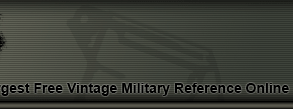|

THE AMERICAN CLOTH INSIGNIA OF WWII
Patches and shoulder insignia enjoyed quite a variety of designs and materials during WWII. Materials such as felt, wool and
cotton were employed. The designs and patterns of the unit patches were very colorful. The rank patches were usually
subdued (OD green or tan). In-country made patches were created, primarily from the fact that supplies were not delivered with
consistency to the front lines. In many cases, soldiers had to figure out how to obtain their own rank and patches. These
were hand made and varied in construction techniques.
This section of the site provides examples of some of the patches used during WWII. It gives
information on how to identify the patches and what is their value. This answers the two most
commonly asked questions; What do I have? and how much is it worth?
This information is brought to you by
MilitaryItems.com ,
the source for military antiques and collectibles. Check out our large selection of patches
available for sale in our on-line store.
|
|
WWII US ARMY AIR CORPS PATCHES
Combat aviation was started during World War One, however it saw its true potential
during World War Two. The formation of bomber groups, fighter squadrons, etc. required
the development of patches to represent the groups.
|
WWII US ARMY PATCHES
The U.S. joined World War II after the Japanese attack on Pearl Harbor on 7 December
1941. On the European front, U.S. Army troops formed a significant portion of the forces
that captured North Africa and Sicily. On D-Day and in the subsequent liberation of
Europe and defeat of Germany, millions of U.S. Army troops played a central role. In the
Pacific, Army soldiers participated alongside U.S. Marines in the "island hopping"
campaign that wrested the Pacific Islands from Japanese control.
|
WWII US PARATROOPER PATCHES
The first US Airborne Unit was a test platoon formed from part of the 29th Infantry
Regiment, in July 1940. The platoon leader was 1st Lieutenant William T. Ryder who made
the first paratroop jump for the US Military on August 16, 1940 at Lawson Field, Fort
Benning, GA from a B-18 Bomber. He was immediately followed by Private William N. King,
the first enlisted soldier to make a parachute jump.
|
WWII US ARMORED DIVISION PATCHES
The development of the tank near the end of World War I prompted some nations to
experiment with forming them into division-size units. Many did this the same way as
they did cavalry, by merely replacing infantry with tank units and giving motorization
to the support units.
|
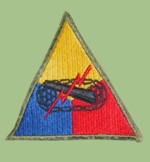
WWII US ARMORED DIVISION PATCH
|
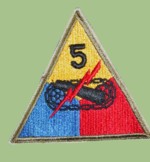
WWII US 5TH ARMORED DIVISION PATCH
|
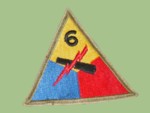
WWII US 6TH ARMORED DIVISION PATCH
|
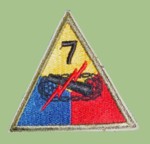
WWII US 7TH ARMORED DIVISION PATCH
|
|
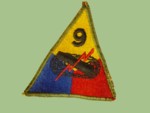
WWII US 9th
ARMORED DIVISION PATCH |
|
WWII US NAVY PATCHES
The Navy saw little action during World War I, but grew into a formidable force in the
years prior to World War II. Though ultimately unsuccessful, Japan attempted to allay
this strategic threat with the 1941 surprise attack on Pearl Harbor. Following American
entry into the war, the U.S. Navy grew tremendously as the United States was faced with
a two-front war on the seas. It achieved notable acclaim in the Pacific Theater, where
it was instrumental to the Allies' successful "island hopping" campaign.
|
WWII US MARINE CORPS PATCHES
In World War II, the Marines played a central role in the Pacific War. The battles of
Guadalcanal, Bougainville, Tarawa, Guam, Tinian, Saipan, Peleliu, Iwo Jima, and Okinawa
saw fierce fighting between Marines and the Imperial Japanese Army. The following
information illustrates some of the patches used by the US Marines during World War Two.
|
|
|
 |
 |
|
| | | | |
|
� 1997 - 2016 - 2019 MilitaryItems.com - All
rights reserved.
| |
 |
 |
 |
 |
 |
 |
 |
 |
 |
 |
 |
|


